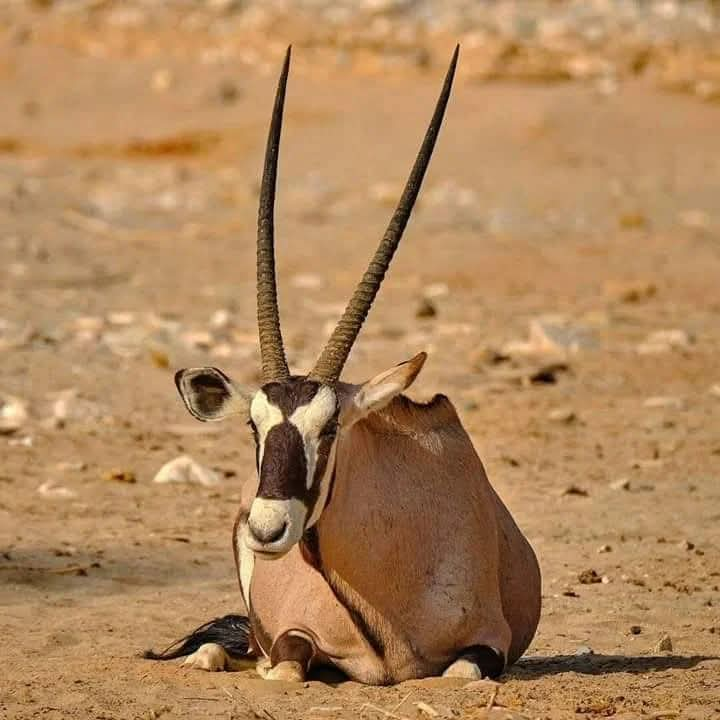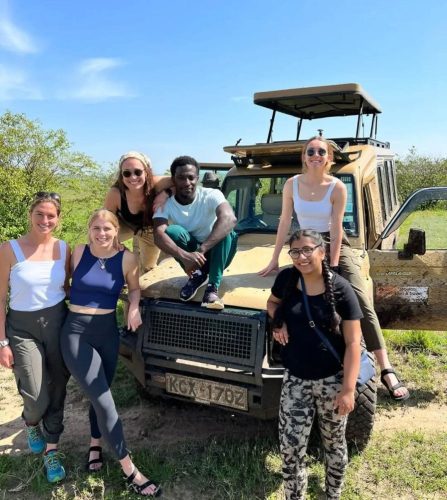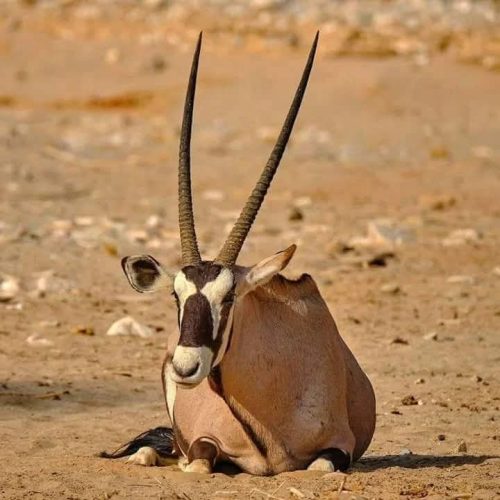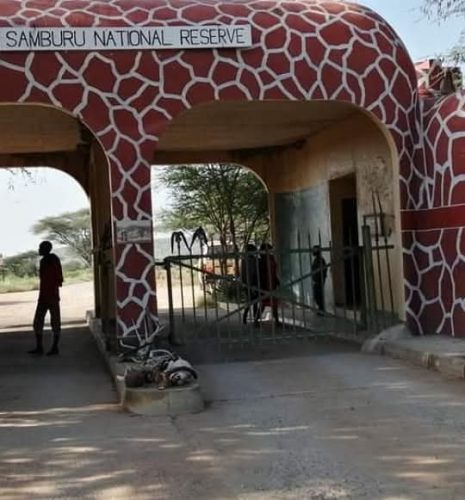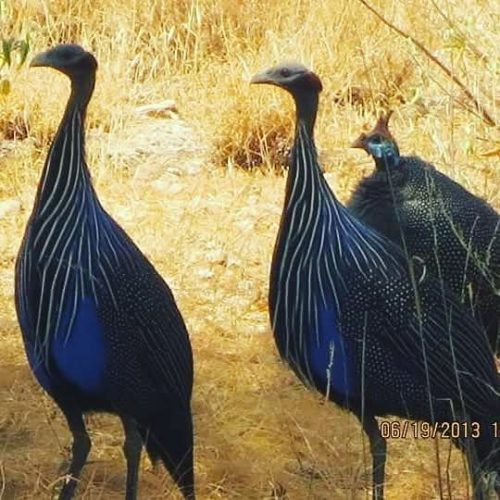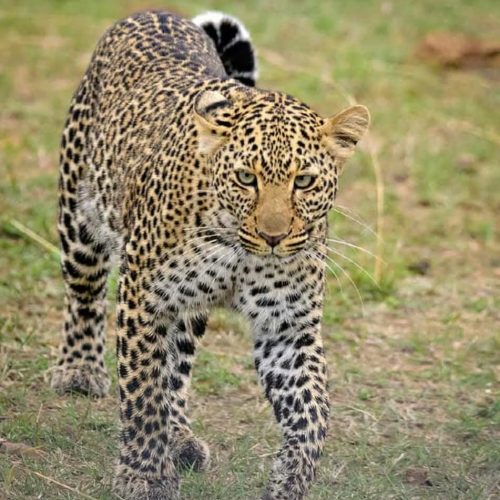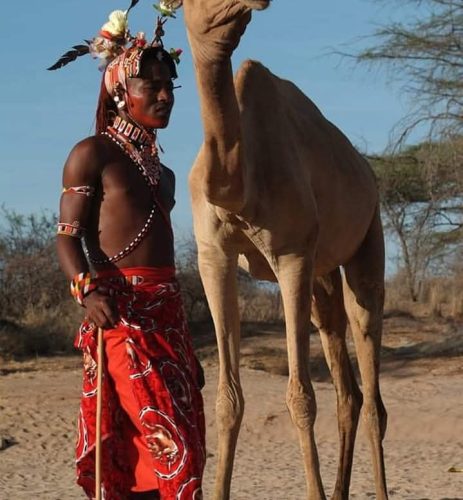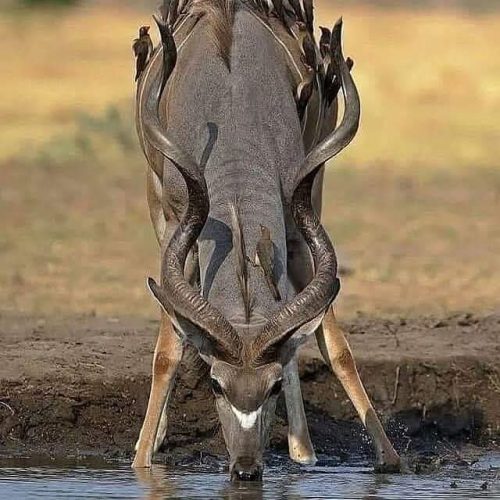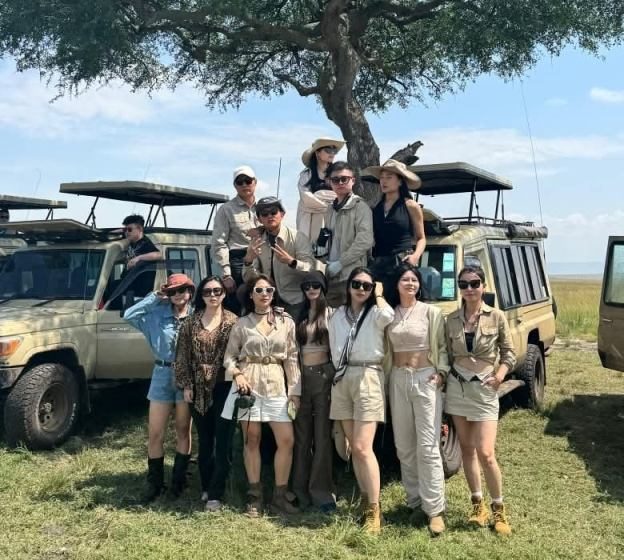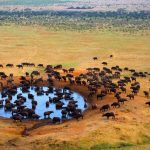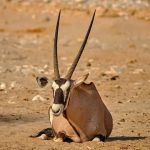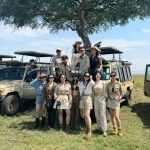Kenya has an international reputation for wildlife safaris. The majority of visitors know about places like the Maasai Mara or Amboseli. But at the far northern end of the country is a completely different experience. It is wild, remote, and full of surprises. If you want to go a bit off the beaten path, the Northern Circuit is well worth considering.
The Northern Circuit covers unique and distinctive parks and game reserves, including Ol Pejeta Conservancy, Meru National Park, Samburu Game Reserve, Buffalo Springs, Lake Turkana, Sibiloi National Park, and the Chalbi Desert. Each location has its own story, wildlife experience, and cultural nuance.
Throughout the guide, we will visit each of these destinations in detail, including what to expect, why they are special, and some ideas for putting it all together in your travel plans!
-
Ol Pejeta Conservancy – Rhinos and Chimpanzees
Conveniently located in Laikipia County, not far from Nanyuki, Ol Pejeta is one of the most well-known conservancies in East Africa. The conservancy is unique as it allows for wildlife conservation efforts to co-exist with community development efforts, unlike national parks, which prioritize the conservation of land and wildlife with little regard for local community development.
Ol Pejeta’s most famous attributes are its Rhino Sanctuary, housing black and white rhinos, and it is the home to the remaining two northern white rhinos population left on planet Earth. Travelers to Ol Pejeta visit to see this rare species and be educated on the conservation efforts to save them from extinction.
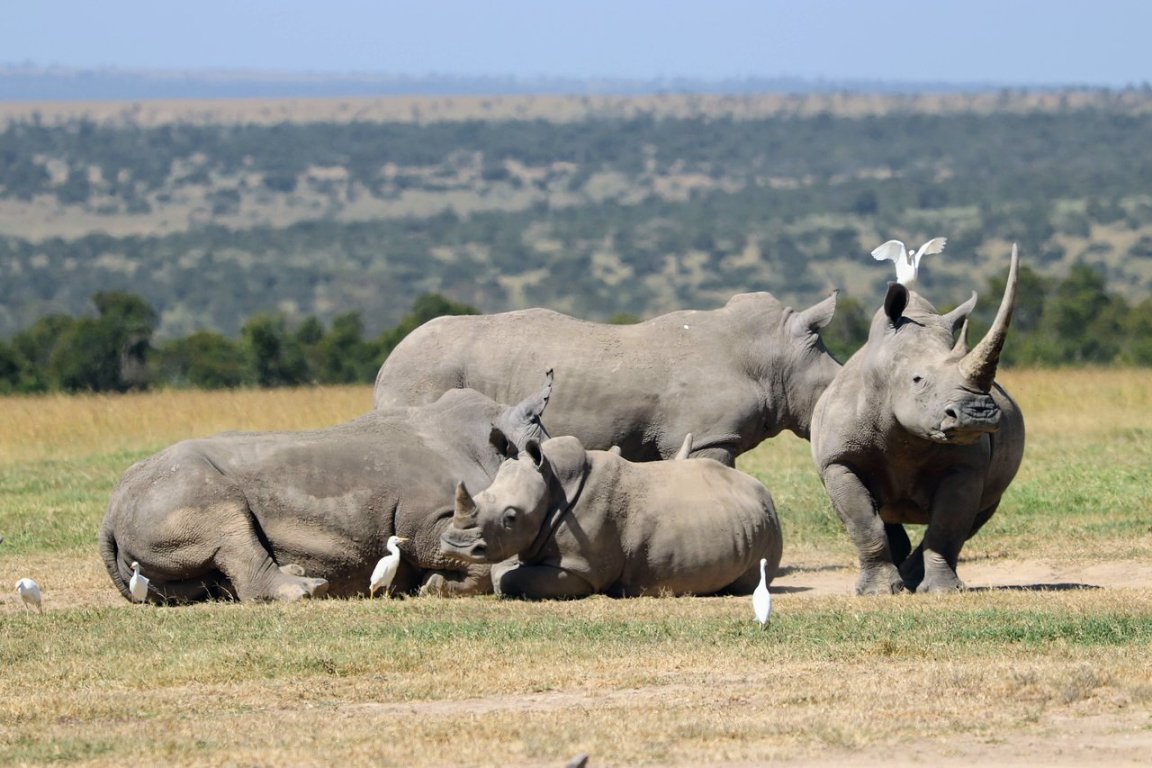
Ol Pejeta also has a chimpanzee sanctuary, the only one in the country. The chimpanzees are rescued from the illegal wildlife trade and are now living in a safe place. It is fun as well as educational to watch the chimpanzees interact with each other and their caregivers.
In addition to rhinos and chimpanzees, Ol Pejeta also has all the Big Five: lions, leopards, elephants, buffalo, and rhinos. The conservancy then has an extremely popular night game drive, which is quite rare in other national parks. Horse riding with rhinos and guided bush walks are options as well.
For accommodation, Ol Pejeta offers some luxurious lodges as well as budget camp sites, and Nanyuki town is very close to the conservancy.
Travel Tip: Don’t forget to pack warm clothes. Evenings in Laikipia can get scorchingly cold.
-
Meru National Park – The Land of Joy Adamson’s Lions
Meru National Park is situated to the east of Mount Kenya. The park is much less congested than the others and is ideal for the types of travelers who like a little more peace and elbow room!
Meru is well-known from Joy Adamson and her conservation work with Elsa the lioness. The story of Elsa has been told in both the book and the movie, Born Free. When you visit Meru, you really are walking on the land where Elsa was free to roam.
The park is wild and lovely. It is rolling grasslands, swamps, and rivers. Wildlife consists of elephants, hippos, cheetahs, and leopards. Birding here is impressive, with over 300 species in the park. A bonus is the protected rhino sanctuary inside the park.

Meru has an intriguing system of rivers that attracts hippos and crocodiles. If you go on a game drive, it is possible to see the hippos and crocodiles close up.
Meru seems to be miles away from the over-crowded, rapidly developing parks. Unlike some of the more famous parks, you can drive for hours without encountering another safari vehicle, giving a truly isolating experience.
There are a few lodges and camps in the park, too, and these are often eco-minded and make a combined effort to blend in with the environment.
When to go – Travel tip: June – September or December to February is the drier season, and wildlife viewing is easier during these times!
-
Samburu Game Reserve – Home of Unique Wildlife
Samburu is located in the north of Kenya, along the Ewaso Ng’iro River. The reserve is semi-arid with dramatic landscapes of acacia trees and rocky hills.
What makes Samburu special is its unique wildlife. It has animals you will not find in southern parks, such as:
- The reticulated giraffe
- Grevy’s zebra
- Somali ostrich
- Beisa oryx
- Gerenuk (a long-necked antelope that stands on two legs to reach its food).
These species are referred to as the “Samburu Special Five,” and it is a big encounter for many travelers if they can see any of them.
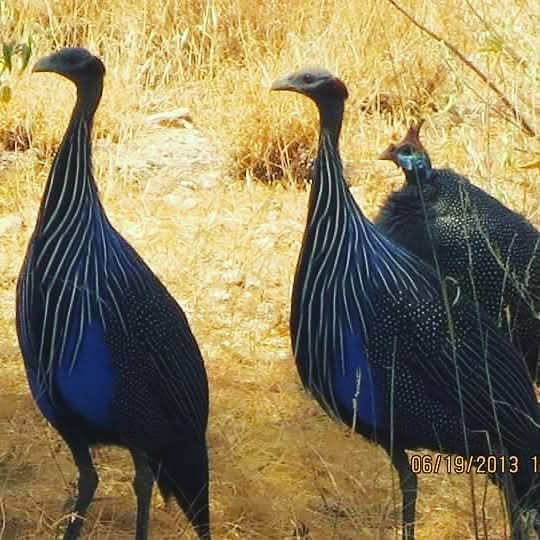
The Ewaso Ng’iro River is the lifeline of the reserve. Elephants, lions, and leopards are often seen drinking at the river. Crocodiles and hippos also reside there. Numerous popular bird-watching species can also be seen.
Additionally, the Samburu are recognized for their unique culture. The Samburu people, who are related to the Maasai, are found in and around the reserve area. They are proud, colorful, and enjoy their heritage, which can contribute to a more cultural experience during your safari if you visit a Samburu village.
Travel Tip: Samburu gets extremely hot during the day, so take light clothing, and also take a hat and sunscreen.
-
Buffalo Springs National Reserve – History and Wildlife
Buffalo Springs is located directly across the river from Samburu. Both reserves are connected, but Buffalo Springs has its own character.
Buffalo Springs is named for the natural spring that provides water in this dry land. Animals congregate near the spring – especially during the dry season, so this is a good place for game viewing.
As with Samburu, Buffalo Springs is home to the “Samburu Special Five,” but it also has an open plain that gives travelers a wide view of the landscape – a good opportunity to see a cheetah chasing prey across the grassland.
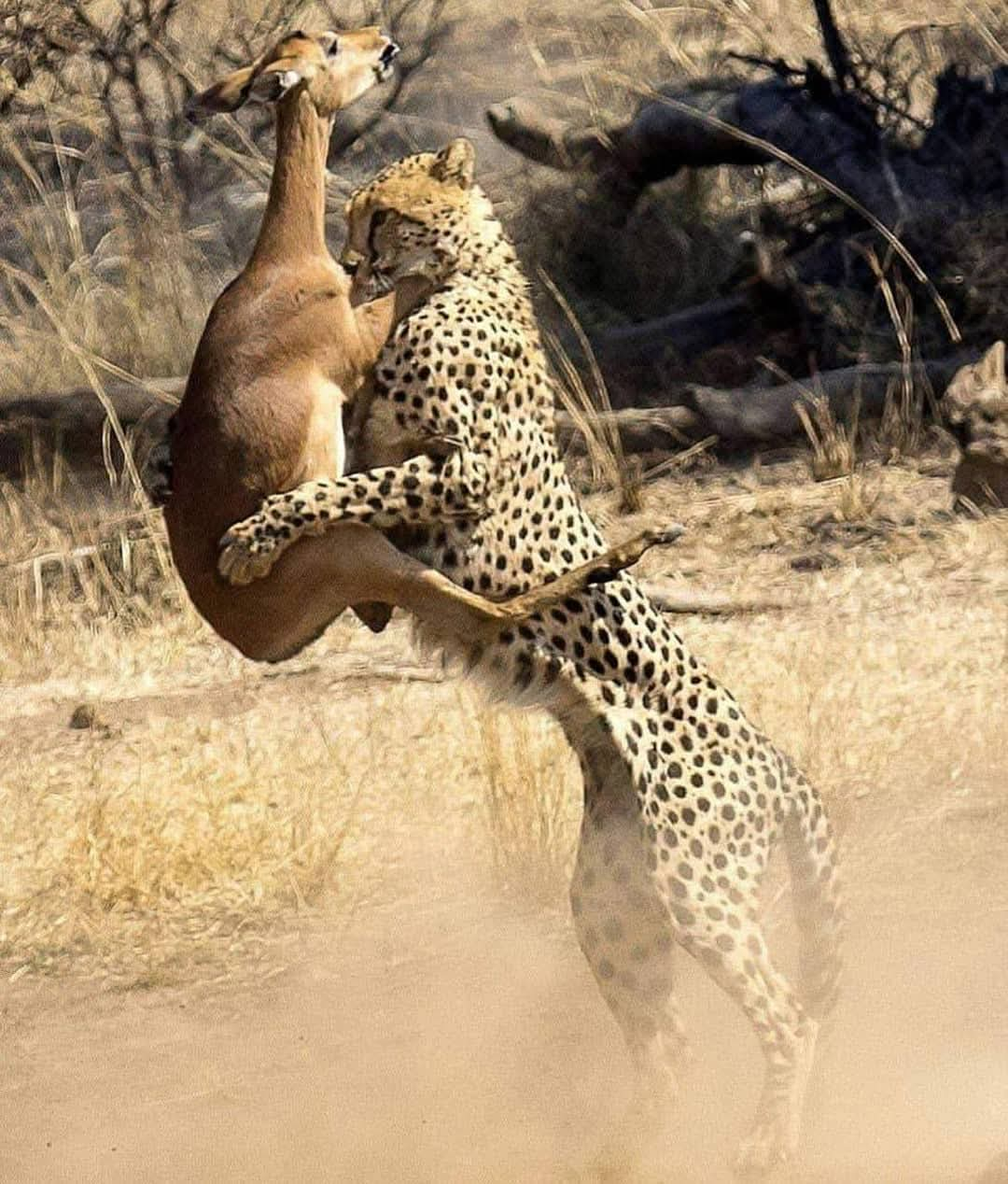
Buffalo Springs also holds a piece of history. The sites were occupied by British soldiers during World War II, and some of the old relics and sites remain, bringing an element of history to your safari.
While the traveler has options to stay at lodges or camps located within Buffalo Springs or Samburu, both reserves can also be covered.
Travel Tip: Bring enough drinking water! It can be dry and dusty.
-
Lake Turkana – The Jade Sea
Lake Turkana is the world’s largest desert lake, often called the Jade Sea because of its beautiful blue-green color. It extends into Ethiopia and is fed by the Omo River.
A trip to Lake Turkana is more than just a body of water; it is the experience of reaching an isolated corner of Kenya, and the journey feels part of an adventure.
The lake is home to Nile crocodiles, hippos, and various fish. Birdlife around the lake includes flamingos and a wide variety of other water birds that adorn the lakeshore.

Culturally, the area around Lake Turkana is fascinating as the different communities that inhabit this region (i.e., the Turkana, El Molo, Rendille) each have their traditions, dances, and crafts.
One of the coolest things about Turkana is how it connects to early human existence. Fossil remains discovered around Lake Turkana have been essential in explaining how humans evolved.
Camping on the Jade Sea under a starry sky is something travelers will not forget.
Travel tip: Travel with a local guide; the area is vast, and roads are in poor condition.
-
Sibiloi National Park – Cradle of Mankind
Sibiloi is located on the northeastern shoreline of Lake Turkana, an area sometimes referred to as the ‘Cradle of Mankind’ due to its significance to archaeology. Sibiloi is known as the site where well-known early human fossils were discovered. Excavations by Richard Leakey and others yielded evidence of human evolution to the world. As a result, Sibiloi has been identified as a UNESCO World Heritage Site.

For visitors, finding fossils is not all that Sibiloi offers. There are species such as Grevy’s zebras, giraffes, hippos, and crocodiles, and the birdlife services are impressive.
The scenery is breathtaking with volcanic hills, petrified forests, and vast open spaces that evoke a raw, untouched feeling.
It is not easy to get to Sibiloi. The roads can be long and rough. For an adventurer, this adds to the excitement. Few travelers visit Sibiloi, so your safari in the park could be all alone.
Travel Tip: Bring an ample supply, as there are few facilities in and around the park.
-
Chalbi Desert – Kenya’s Hidden Desert
The Chalbi Desert is located near Lake Turkana. It is one of Kenya’s most remote areas, and it is very special. Chalbi is Gabbra and loosely translates to “salty.” The name applies to the salt flats, dunes, and water in the desert oases.

When traveling across Chalbi, you feel like you are on another planet. The flat, wide-open desert feels infinite. In the evening, the sky turns gold and pink, and the stars are brighter than anywhere else at night.
The oases attract camels and goats herded by the Gabbra people, and it is a humbling experience to meet the people and see how they thrive in the harsh landscape.
Adventurers can sand drive, camel trek, or experience the vast silence of the desert. Most travelers combine Chalbi with trips to Lake Turkana or Marsabit.
Travel Tip: Take a 4×4 vehicle, because the desert is rugged terrain.
-
Marsabit National Park – An Oasis in the Desert
Marsabit National Park is one of the gems of the Northern Circuit of Kenya. It is situated in Marsabit County and appears like a green oasis rising out of the drylands surrounding it. Its reputation is based upon its crater lakes, dense forests, and unusual wildlife.

The crown jewel of the park is Paradise Lake, the stunning crater lake deep in the forest. Travelers often have described this destination as one of the prettiest places in Kenya. Elephants, buffalo, and many birds call this lake “home”.
The forests of Marsabit are cool and misty, so notably different from the hot deserts around it. There’s a refreshing feeling walking or driving beneath the tall trees. This environment provides habitat for many leopards, lions, and greater kudu. This nature also provides a true bird lover’s paradise, with over 350 recorded species of birds.
Marsabit has an interesting history besides its natural beauty. In the 1970s, it was the owner of the famous giant tusker elephant with the name Ahmed, whose life was protected by presidential decree. The park still hosts a memorial to him and is a part of the deserted area.

For visitors, Marsabit is not just about wildlife. It is also an opportunity to learn about the practices of local communities such as the Rendille, Borana, and Gabbra, all of whom bring their own cultures, traditions, camel caravans, and colorful clothing, which enhances the visit.
There is accommodation in Marsabit town, which is close to the park. There are picnic sites and campsites within the park for those who want to camp in a more nature-like environment.
Travel tip: Early morning hours are the best for game drives. The forests are often covered in mist at that time, which creates a mystical feeling for travelers captured as the sun rises.
Travel Tips for the Northern Circuit
- Transport: A 4×4 vehicle is recommended; the roads in northern Kenya can be very rough.
- Guides: Visit experienced guides or tour operators; they will know the terrain and culture of their area.
- Safety: The north is generally safe for travelers, although some areas are more remote than others; always inform someone of your travel plans while in northern Kenya.
- Packing: During the day, pack light clothing for the trip and not all camping gear in very cold weather. Please bring sunscreen, hats, and sufficient water.
- Health: Some areas are hot and dry; remember to stay hydrated and bring a basic medical kit.
- Timing: The best seasons to view wildlife would be during the dry seasons of June to September and December through February.
- Culture: All communities should be well respected, and ask before taking pictures. If you can learn a few words of greetings, it goes a long way.
Conclusion – Why Choose the Northern Circuit?
The Northern Circuit is different from the famous southern parks. It is wild, raw, and full of discovery. You will see rare animals in Samburu, rhinos in Ol Pejeta, and lions in Meru. You will touch history in Buffalo Springs and Sibiloi. You will marvel at the Jade Sea of Turkana and feel the silence of the Chalbi Desert.
For travelers who love adventure, culture, and unique landscapes, the Northern Circuit is unforgettable. It may be less visited, but that is its beauty. It offers experiences that are personal, authentic, and deeply moving.
So if you are planning your next trip to Kenya, go north. Let the Northern Circuit surprise you.
Photo Gallery

